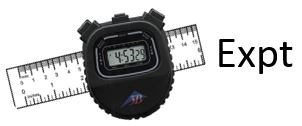PHY385 Module 10: Aberrations in Thick Lenses
Table of contents
Activity 10.1 – Aberrations in lenses. Distortion
-
Assume the Ray Optics Mirror is missing from our Pasco Optics Kit, but we still have the Cylindrical Lens left. Make use of what you learnt in class about the total internal reflection, to provide illumination for our sample using the Cylindrical Lens. Draw a simple ray diagram with important angle labeled.
-
Is the illumination (the light strip) provided by Cylindrical Lens as even as Ray Optics Mirror's? If not, explain why in a couple of sentences. (Hint: this light source gives light rays not like a laser which is a narrow beam).
-
There might be rainbow like light strips in the image you take (if not, try to rotate the Cylindrical Lens), explain why such a colorful light strip appears in this experiment. Save the picture with the rainbow strip.
-
Distortion is a spherical lens aberration that appears due to different focal lengths of the different areas of the lens which gives different magnification. Without any other aberrations, distortion results in a misshaping of the image as a whole, even though each point on the image is sharply focused.

Positive or Pincushion distortion: When the magnification on the optical axis is less than the off-axis magnification, pincushion distortion results. The visible effect is that straight lines are curved outwards from the center like a pincushion.
Negative or Barrel distortion: Barrel distortion is the exact opposite of pincushion distortion; when the magnification on the optical axis is greater than the off-axis magnification. On the images, straight lines are curved inwards in a shape of a barrel.
For this experiment, take the transparent film with square grid and lines and place it on the position of a sample on the Specimen Stage.
Observe and record the image of the grid and lines, and conclude on the type of distortion out setup produces.
Put all images labeled with question number from the above sections in one document in a PDF format, print out the document and attach it to the report.
Activity 10.2 - Tour of the Holography Lab at the Institute for Optical Sciencies (IOS).
This activity was created by Natalia Krasnopolskaia in October 2014.


